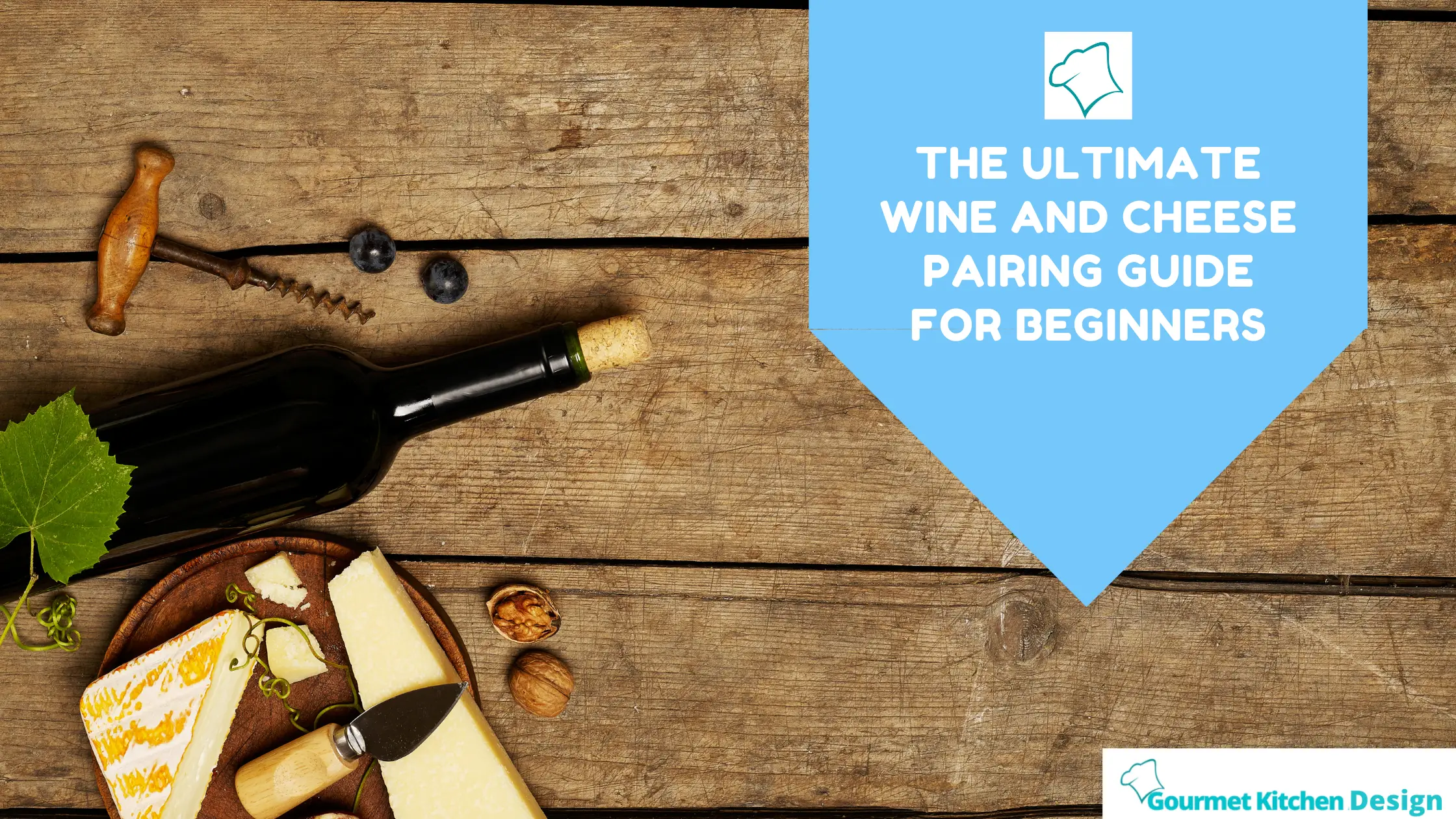Two of life’s best pleasures are wine and cheese. Here is the ultimate wine and cheese pairing guide for beginners.
So, you invited your friends to come over to a party. You’re also setting up your cheese platter.
But you’re not sure what wine to pair with the cheeses you’ve prepared. I’m here to help you with that!
Everyone knows that wine and cheese complement each other. Choosing the right wine to pair with your cheese can be challenging for beginners.
Let me make your life easier! So, let’s get started.
Why Do People Love To Eat Cheese With Wine?
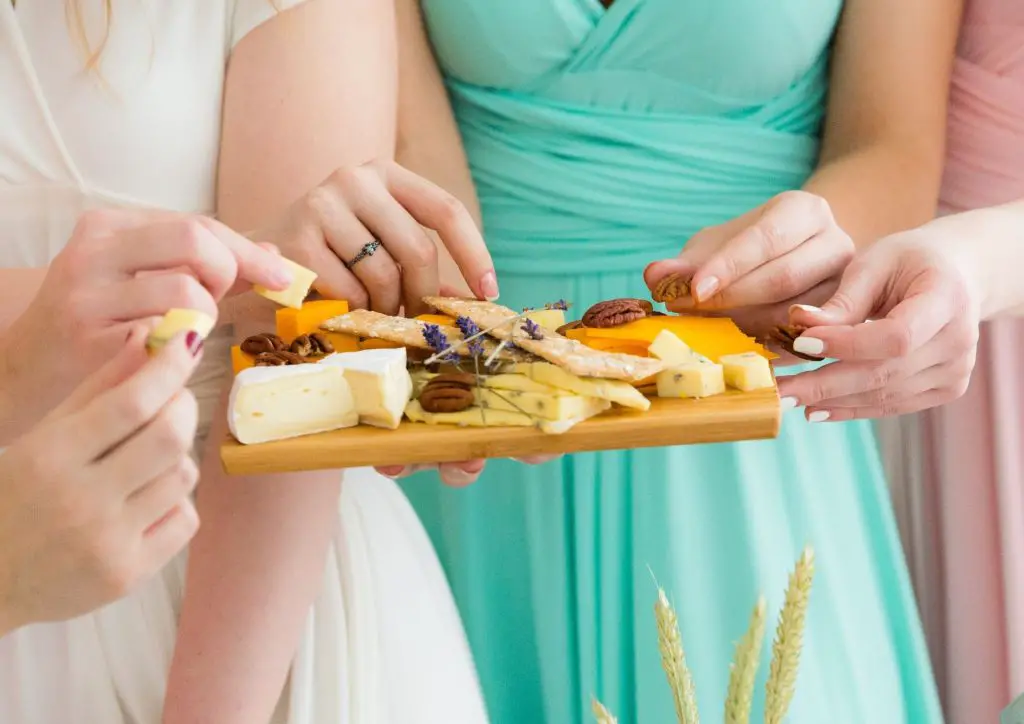
Wine and cheese from the same region are paired together for decades. Many cheese and wine kinds have shared a common origin, typically on the same farm or in a small village.
Because of their proximity, regional recipes for wine, cheese, and other regional foods have been paired. These pairings have been passed down from generation to generation.
What Makes Wine and Cheese Go Together?
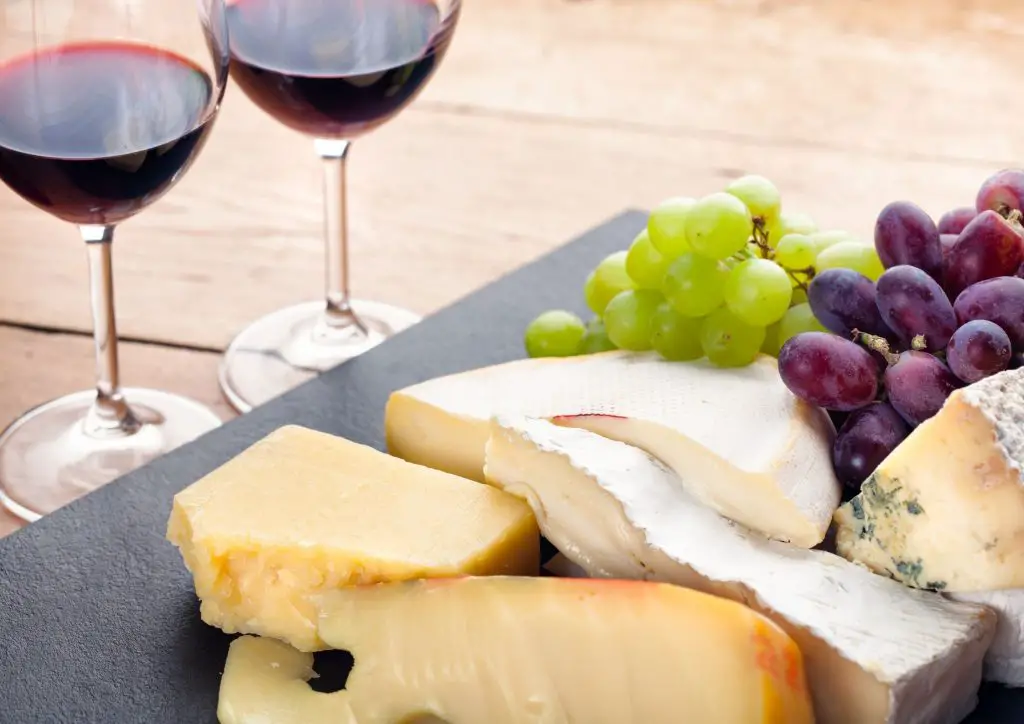
Wine and cheese have somewhat of a yin and yang relationship. Cheese is fatty food that coats the mouth and blocks taste buds for drinks.
The wine has a rich taste. The acidity and sweetness melt this creamy barrier to offer a fuller taste on the palate and create a great mouthfeel.
But, the opposites attract, giving in a great pairing of flavor and texture. Indeed, a perfect balance.
How To Pair Wine With Different Cheese?
You may be thinking about whether you should start with the wine or the cheese.
Most people who are new to wine and cheese pairing will start with a specific cheese. And look for wines to go with a cheeseboard.
So, here’s what you can pair with the types of cheese.
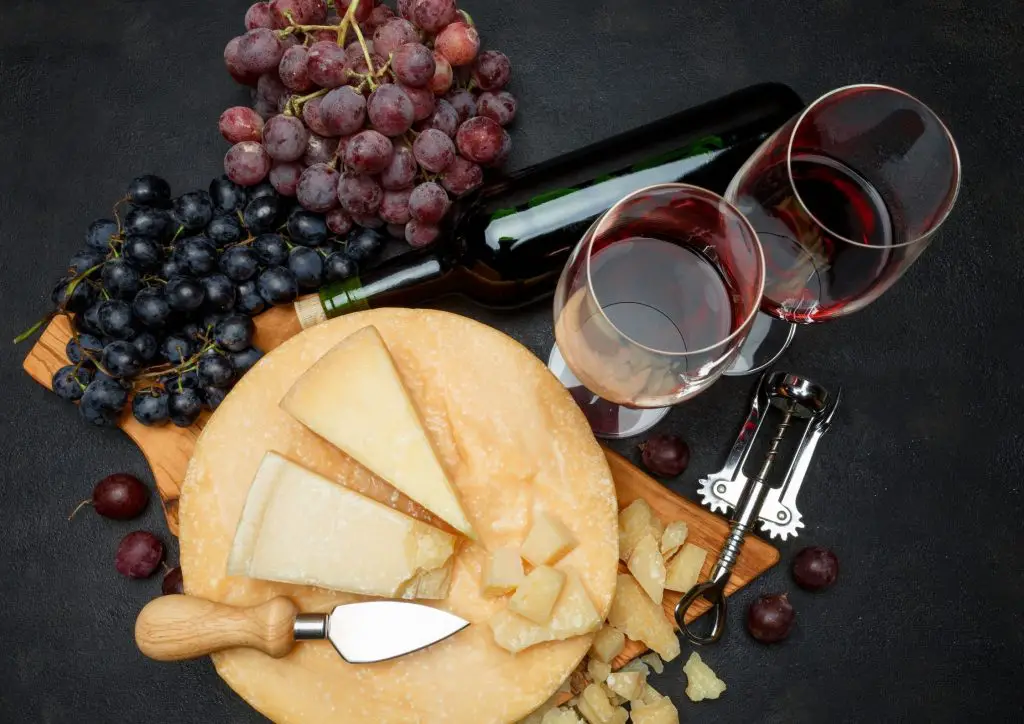
Hard Cheese
Hard cheese is the easiest type of cheese to pair with wine. These includes Cheddar, Comté, Parmigiano-Reggiano, and Manchego.
Stronger red wines with higher tannins and lower acidity go well with harder cheeses. However, Champagne and other sparkling wines go well with cheddar.
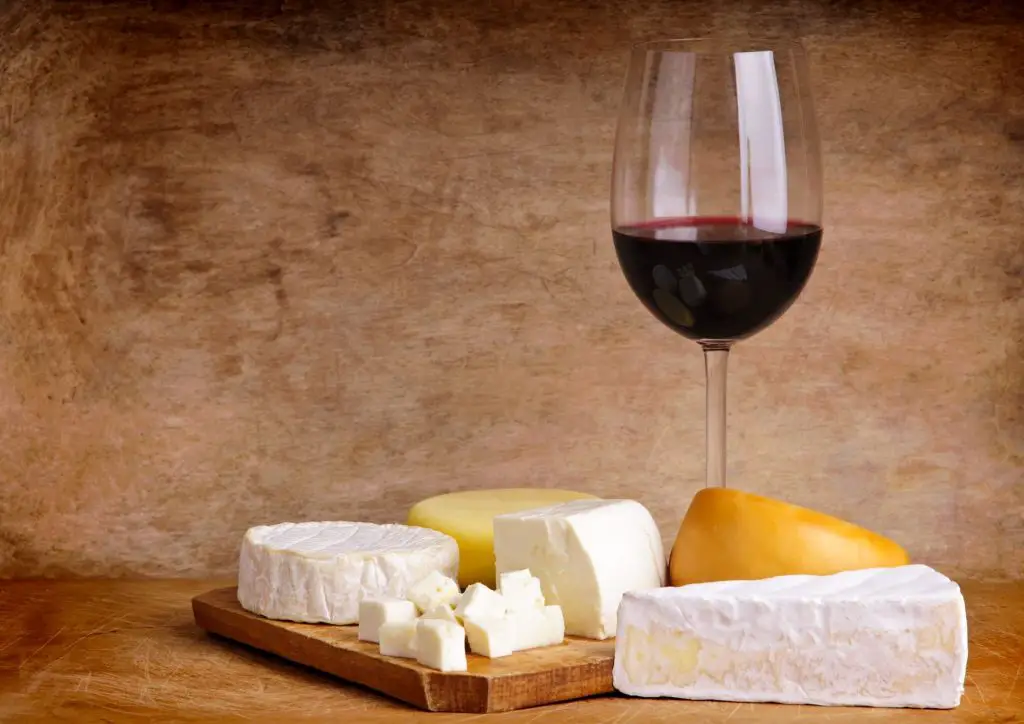
Soft Cheese
White wines pair well with a range of soft cheeses. Brie, goat cheese, provolone, mozzarella, and other cheeses pair well with Pinot Grigio, Chardonnay, and Champagne.
White wines tend to go well with mildly flavored cheeses. Soft cheeses, such as brie and camembert, combine well with fruitier red wines, such as pinot noir or Beaujolais.
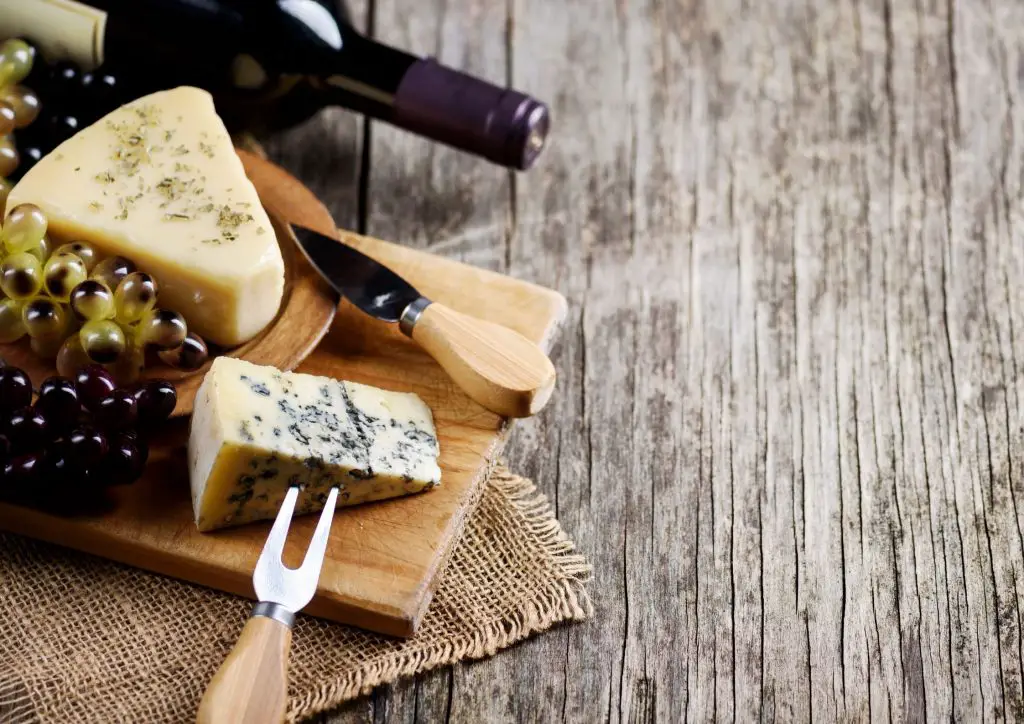
Blue Cheese
Blue cheeses need a wine with both body and sweetness. It can balance their bold flavors and salty or savory tang.
Stilton, Gorgonzola, and Roquefort are the most popular blue cheeses. Each of these cheeses pairs nicely with a dessert Port, Zinfandel, or Cabernet mix.
Wine And Cheese Pairing Guide and Tips For Beginners
- What Grows Together Goes Together
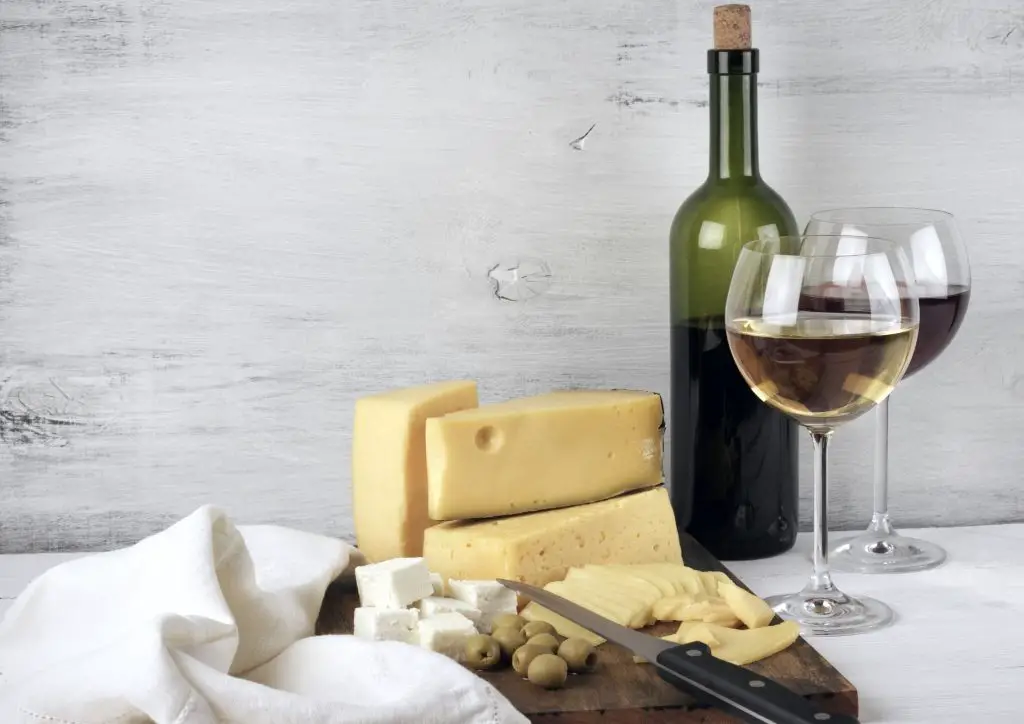
The best way to know pairing cheese and wine is to look at the map. As the saying, “what grows together, goes together.”
We don’t have a long history with wine and cheese in the United States. However, you can still use geography to help you make decisions. For example, California cheese paired with California wines.
Picking traditional pairings based on location is a safe bet for European wine and cheese. Serve a slice of Manchego with a Rioja or Cava from Spain.
- The Same Level Of Intensities
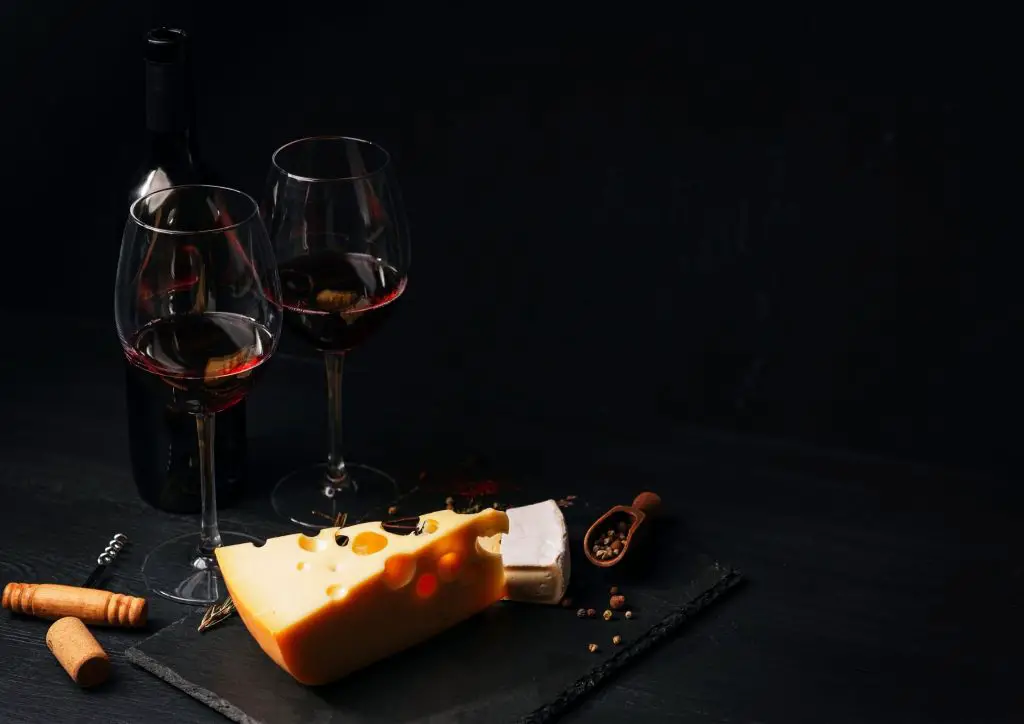
We often think of cheese as on a level of intensity, from soft, mild fresh cheeses to bold, pungent old wheels.
You can view wines the same way and look for pairings that work well together on that level.
Serving big, rich red wines with robust, long-aged wheels like cheddar or Gouda. Or a classic pairing of young, soft-ripened cheese with a crisp white wine or wheat ale.
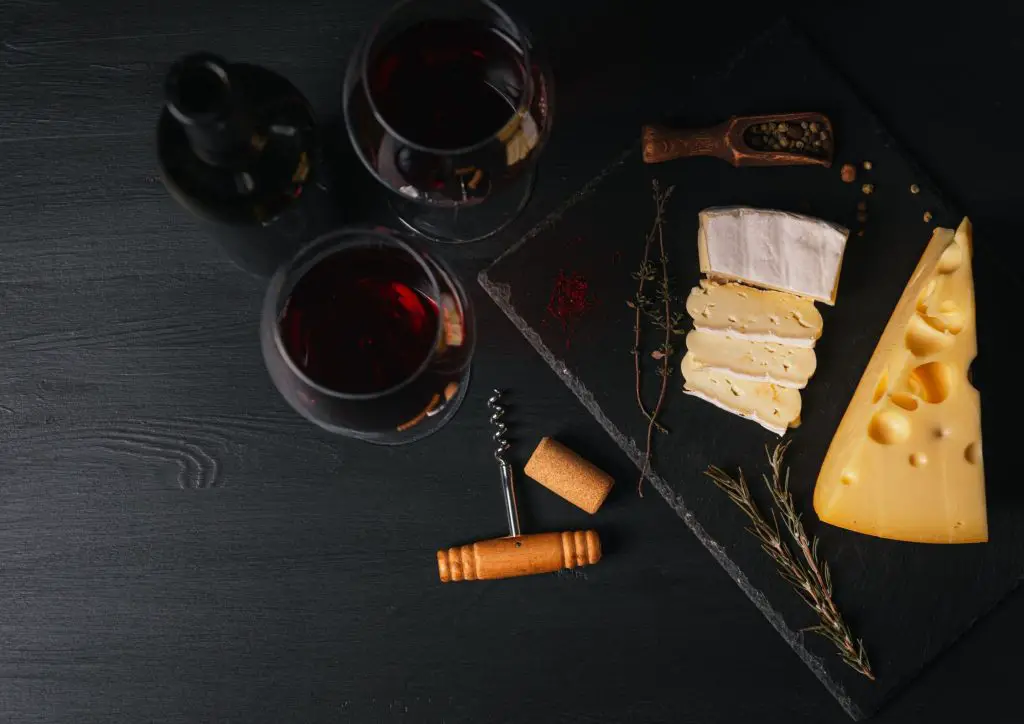
- Look for Opposite Profiles
Many of our usual wine and cheese pairings are based on similarities. But combining flavors and textures that are opposite can be great.
The pairing of soft, creamy bloomy rind cheeses with dry, effervescent sparkling wines is perfect. The acidity and bubbles help to cleanse the palate and ready you for another mouthful of rich, buttery goodness.
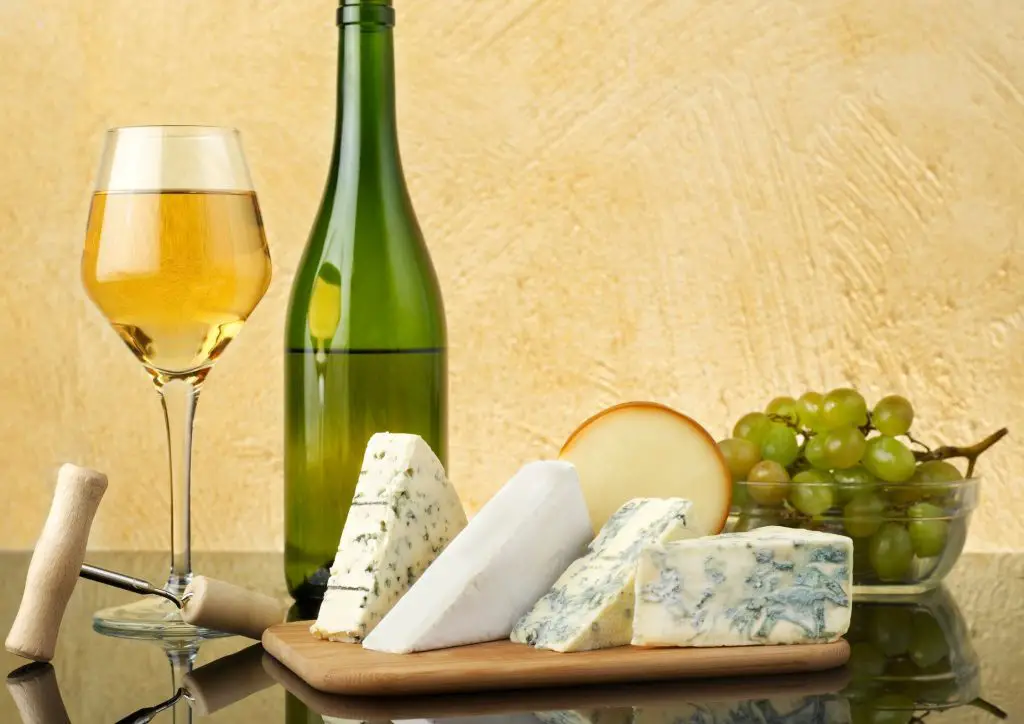
- Look For Types That Are Ideal for Everything
You know how to pair individual cheeses with specific wines. But what if you’re serving a cheese board with various styles?
If you’re looking for a wine to pair with a few different varieties of cheese, look for versatile wines that can handle a wide range of flavors and textures.

- Experimenting Is the Best Way To Learn
It’s fine if you’ve previously picked a tasty-looking bottle and were disappointed by the outcome.
Experimenting is key when it comes to pairing. And a wine that clashes or drowns out one cheese might shine with another style.
20 Wine And Cheese Pairings: Match like a PRO
- Prosecco And Parmesan
- Champagne and Brie
- Chablis and Goat Cheese
- Pinot Noir and Gruyere
- Chianti and Pecorino Toscano
- Port and Stilton
- Cabernet Sauvignon And Aged Gouda
- Rioja And Manchego
- Malbec And Aged Cheddar
- Monterey Jack and Merlot
- Sauternes and Fondue
- Riesling And Ricotta
- Beaujolais And Feta
- Chardonnay And Gruyere
- Viognier Pairs Well with Jarlsberg
- Gewurztraminer and Morbier
- Moscato d’Asti and Gorgonzola
- Tempranillo and Idiazabal
- Sauvignon Blanc and Goat Cheese
- Provence Rosé and Havarti
people also ask
What kind of wine goes with a cheese platter?
It would also be lovely with a crisp white wine or a very light red wine like Pinot Noir. Or you could try a Chardonnay that isn’t overly oaky. Cheeses that are aged and firm, like Havarti or gouda, require a little more flavor
Is cheese a protein or a fat?
Cheese is a dairy food that is high in protein, fats, and minerals.
Do you drink wine first or eat cheese?
Start first with taking a sip of wine, then eat a bit of cheese, while a little of the cheese remains inside your mouth, take another sip of wine to combine wine and cheese.
Conclusion
Pairing wines with various cheeses is more than an art form. It is science! It can improve the overall eating experience.
The pairings I listed are only a few of the many great options. There is a lot more to discover!
Once you’ve mastered pairing the right wines with the ideal cheeses, you’ll be able to come up with pairings you’ve never imagined. You can surprise your friends, family, and even yourself!
Of course, without the best cheese knife, your wine and cheese experience will never be complete.
What’s the best cheese and wine pairing you’ve tried? Let me know in the comments!

